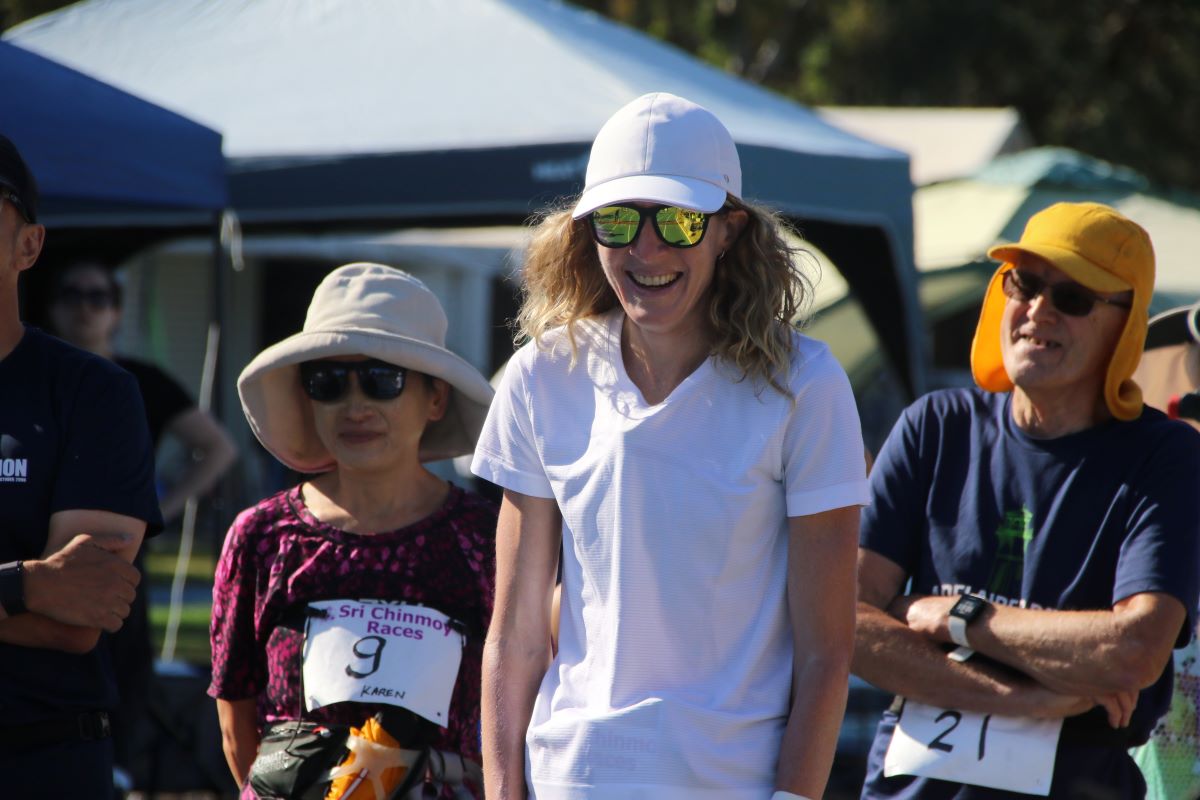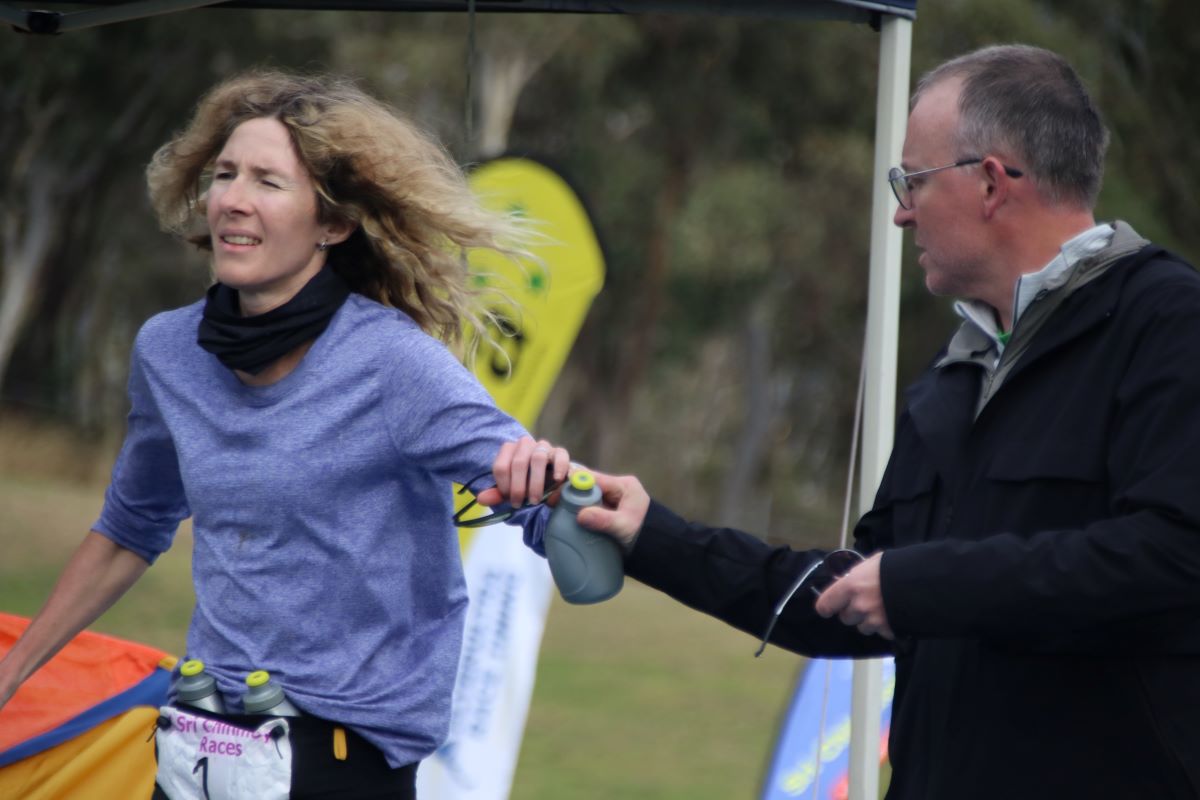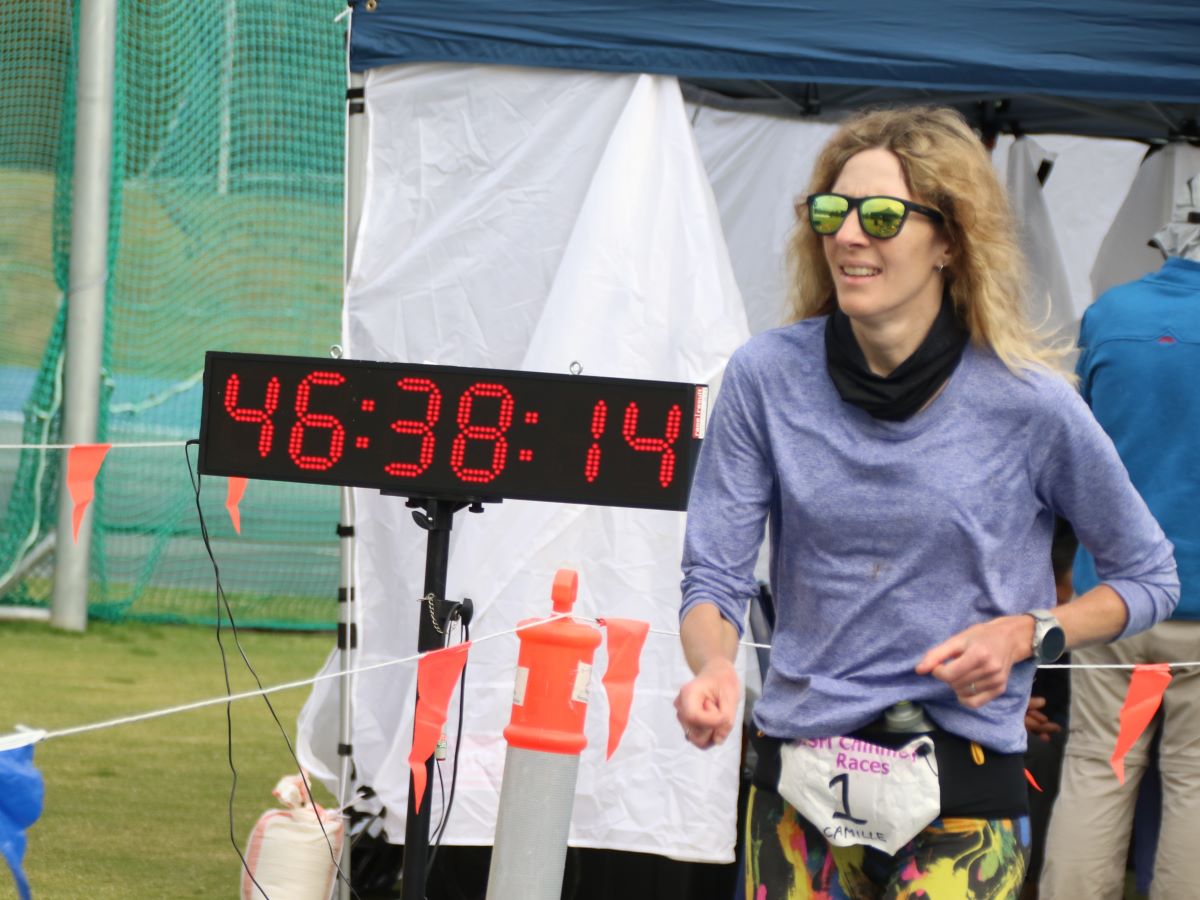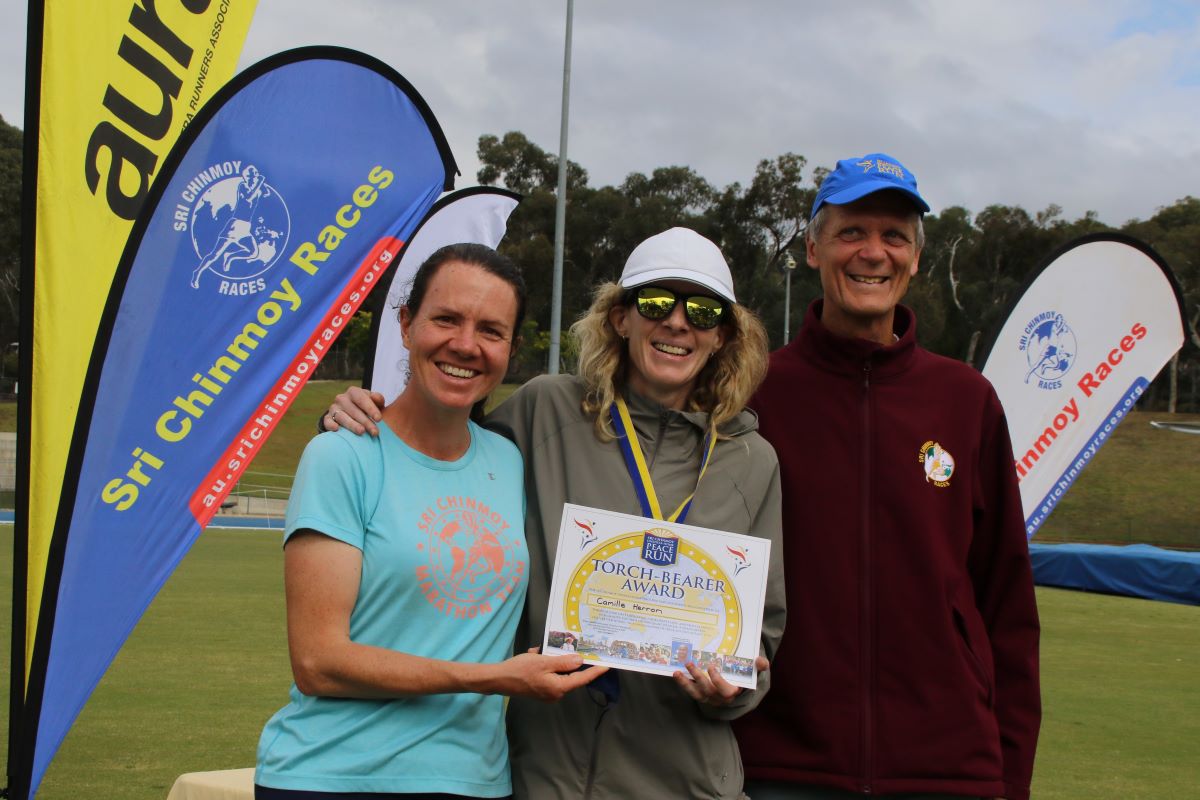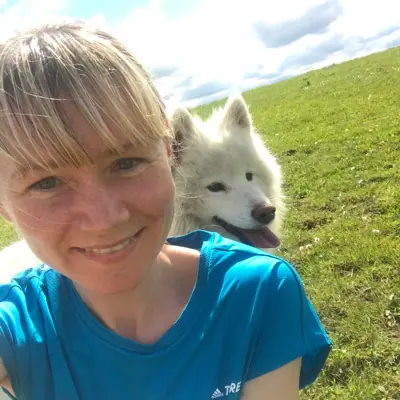This past weekend, finishing on March 25, 2023, Camille Herron once again made ultrarunning history by adding an almost 15-mile margin to the women’s 48-hour world record at the 2023 Sri Chinmoy 48 Hour Festival in Bruce, Australia.
Her official distance was 435.336 kilometers (270.505 miles), to best the previous record of 411.458 kilometers (255.668 miles), set in February 2023 by the U.K.’s Jo Zakrzewski at the 2023 Taipei Ultramarathon.
In this interview, Herron talks about how her training has evolved, the transcendental state she enters during these supreme efforts, and what it is that she feels makes women particularly suited to running far.
iRunFar: First of all, congratulations on your new 48-hour world record. A couple of days on, how are you feeling now, physically and mentally?
Camille Herron: Oh, gosh, I’m getting a little bit better than I was yesterday. So, yeah, I just have to take it one day at a time right now and eat all the food and try to get as much sleep as I can. And yeah, I’m still trying to process everything that just happened.
iRunFar: Of course. Yeah. It’s so amazing that you did this just five weeks after running 100 miles at The Raven 24 Hour. How was your recovery from that? Do you think it was enough time to be fully recovered?
Herron: Yeah, I felt really good, actually, after that 100 miler. And I took a bit more recovery time the week after. I went to San Diego, California, and had a really good recovery week and did more walking and hiking and just a little bit of running. And then just ate a lot of food and did the typical recovery things. So I guess you could call it my last long run. [laughs]
iRunFar: Ok.
Herron: In preparation for the 48-hour race, I just built back up for a couple of weeks and got my … I’d have to look at my training log to see how high I got my volume back up. I think it’s maybe 114 miles or so. I kept my training like really low-key and did a couple of speed sessions and a rolling hills session. And yeah. There’s only so much you can do in five weeks between races. Just kept it really low-key and made sure my body felt healthy, strong, and energized.
iRunFar: Ok, great. And what was different about how you prepared for running for this amount of time — for 48 hours — compared to, say, 24?
Herron: I think about when I ran my 24-hour world record, I had a really long build-up. And I was coming back from an injury back in 2019 because I hurt my hamstring. And so I think I had about 16 weeks to build up for that. I had this extended build-up that I was able to really focus on putting in some big volume in the month or two before it. And so I’ve been racing quite a bit the past two years, and so I wouldn’t say I’ve had these long build-ups like I’ve had [in the past]. I’ve been focused more on just recovery between races and keeping my training pretty low-key. There was an article that came out a few weeks ago that’s kind of gone viral about how I’ve been doing fewer long runs the past couple of years.
iRunFar: Yeah.
Herron: That’s been a process over time, even going back to my marathon career where I started cutting back long runs, even back in 2008. I started shortening my long runs, doing fewer of them. I mean, it’s just continued as I got into ultrarunning. I’m doing all these long races, and I really have to focus more on recovery between those efforts. And then also, during the COVID-19 pandemic, I wasn’t doing long runs because it just seemed kind of pointless.
iRunFar: Yeah.
Herron: I was actually feeling pretty good, not doing as many. And then the other thing is, because I’m now a masters runner, I’ve also found that I’m going to have to work more with my body and probably play with my hormones because things are starting to get kind of weird. I’m starting to go through perimenopause. And so I kind of feel those hormonal fluctuations during the month, and I have to work more with what I’m feeling and my energy. And I work with a dietician now. We’ve been trying to tweak my diet and work more with what my body’s feeling.
iRunFar: Ok, brilliant. In terms of your nutrition plan for this race, did it differ from how you approach running for 24 hours or 100 miles? Were you trying to eat more real foods, or how did that go?
Herron: Yeah, this is the first time I’ve completed 48 hours. So, you’re going into no man’s land, not knowing what your body’s going to go through. But I felt like I would treat that first day as I would a 24-hour race or even 100 miles. Mainly I can pretty much get by on water, gels, and sports drink, and then supplement in other things as I feel I need to, like maybe fruit, potatoes, or soda. Sometimes a beer or a taco.
I got into that mindset. I just treated the first day like I would a 24-hour race, and then on day two tried to add in solid foods or things I would eat in a typical day.
The biggest challenge that I faced was when we got here, they were going through a heat wave. Because they’re in the Southern Hemisphere, they’re pretty much going from their summer to the fall. And right now, in America, we’re going from our winter to our spring. Normally I’m a lot more heat adapted, but this time I wasn’t quite as heat adapted. I find that can play with your body chemistry, nutrition, and hydration. I was really cognizant of what my body was feeling and making sure I was hydrating really well on the first day. I was eating pretty consistently and feeling pretty good.
I don’t remember at what point things started to go kind of weird. Maybe it was about 10 hours into the race. That’s the point where you’re overloading your system. You know you can only take in so many gels before you have to start mixing things up. But yeah, things started kind of going haywire. So I started mixing in some potatoes and fruit smoothies. At some point, I started to feel a bit triggered. And I started puking and had some diarrhea. And I was even concerned at one point, like, “Do I have food poisoning?” I wondered if I had taken something in the race or before the race because I was feeling really awful.
iRunFar: Wow.
Herron: I was feeling really bad. I hit a point, at maybe about 18 hours, where my body was just not responding to anything I gave it. When you go through those periods, you kind of just need to let your gut chill out and just take water and not be forcing calories.
But I have a nutrition and biochemistry background, so I’m trying to brainstorm in my head — What can I do as a nutrition alternative? And so, we have this sports drink, Maurten. I basically ended up just going straight to Maurten and water. And we were doing mineral drops in my water. We ended up cutting that and went to plain water.
I was finally able to get things to calm down after that. So the first day, I went through a really rough period where I was thinking about quitting. I couldn’t wrap my head around being 18 hours in and going another 30 hours. I was already feeling so depleted in my energy and not able to figure out what I needed. But once we got the Maurten going, I started feeling ok. I was pretty good after that.
iRunFar: Ok. You would never think from the following race that you went through all of these struggles. It looked good from the outside!
Herron: Yeah, unfortunately, I felt bad because some of the runners were talking about how they saw me puking so much. That happens. But fortunately, I had many experiences where it makes you actually feel better. So once I had that out of my system, I actually felt better.
iRunFar: You took about a 40-minute break in the middle. Was that part of the plan? Or did you listen to your body on when to rest?
Herron: I think [napping is what] probably what really helped me, compared to other runners who do multi-day events. You hear experiences about ultrarunners having hallucinations, where they’re going beyond 24 hours. When I ran my 24-hour world record, I actually took two six- to eight-minute power naps during that race. It was just enough to recharge my brain like it was a battery, and I was able to push strongly through the last couple hours of that race to extend my world record by almost eight kilometers.
I knew how powerful sleep would be to help stave off this hallucination, to recharge my brain mentally. I have a book on multi-day training and racing, and I know the strategies behind it. There’s the thought that you can plan to have a sleep, or there’s the thought that you just work with your body. I took the approach of just working with my body and kind of knowing that I usually take a daily nap in the afternoon. That’s when my body’s used to sleeping. Then obviously, sleeping through the night. I thought, Those are the times when my body gets tired, and I do need to lie down. And usually, if I’m doing a 50-mile or 100-mile race, I’ll take caffeine during the afternoon to just work through when I get tired in the afternoon. But for this race, my first rest break was at about 50 miles, which was when I normally take my nap.
I was going to try to take caffeine in the race, but I just wasn’t feeling good with the caffeine. So I just ended up taking a break and lying down and just mentally meditated and recharged my brain.
So I had, I think, 14 extended breaks during the whole race. Most of those were periods when I was laying down to mentally charge up my brain battery. Once I got my final power nap where it felt like it kind of stuck, like to the point where I felt like ok, that was sufficient enough that I could power through the final hours. I was pretty much like a machine the last couple of hours trying to click off the splits and hit the different mileage goals that we set out.
iRunFar: Ok, brilliant, that feeds into my next question. You broke the record by quite a lot. Did you have a particular distance target in mind or a rough idea of splits?
Herron: I felt like it was really important for me not to set a mileage goal because I felt that if I aim for a certain mileage goal, I’m basically setting a limit on myself. I feel that it’s important to, especially going for world records, to run without limits. That’s how I pushed all these world records. I didn’t just aim for the world record. I didn’t just aim for a target. I aim to be internally focused on getting the most out of myself.
It’s pretty incredible. Like, every time I have this moment to do this, I really feel like I’m getting everything out of myself. It’s such a transcendental experience. It feels like my head starts to float on my body. I had this machine-like state with my mind and my body to keep pushing and getting the most out of myself. It’s a really incredible experience. For me, the pain cave doesn’t exist. I go to a state where I’m breaking free of the pain cave and then pushing beyond everything that I’m feeling in terms of pain and fatigue. I think it’s so much higher. I imagine myself being a rocket to the moon.
iRunFar: That’s amazing.
Herron: Breaking free and going to the moon. It’s just a super cool experience. I’m always grateful when I have that in those moments because it could be a once-in-a-lifetime moment.
iRunFar: So you’ve said, “Women ultrarunners age like fine wine.” I love that quote. I’m wondering, what is it that you think makes your performances improve with age? Do you think it’s more accumulated experience, physical adaptation, or a bit of both?
Herron: Yeah, gosh, I’ve had two failed attempts so far at 48 hours, and it’s been a couple of years since I’ve attempted it again. I’ve definitely got more experience and wisdom. I’ve been in the sport for 10 years and feel like I have a lot more experience and wisdom. When I first got into this sport, I was a lot more aggressive with my pacing. Now I’m kind of dialing it back.
I think that’s something women are really good at — pacing ourselves more appropriately. That really helps in the multi-day stuff. My day two for this 48-hour world record was really strong. I think I even exceeded what Yiannis Kouros did on day two [when he set the men’s world record]. There’s definitely something to be said, not only that women ultrarunners age like fine wine, but what’s the possibility of going longer? Maybe there’s something unique about us in terms of estrogen. Or even the maternal instinct that women have — that we are made to endure, have a baby, and push through pain. I think maybe that somehow comes out in ultrarunning — going through these extreme levels of fatigue and pain. It makes me smile that here I went further than I ever have, but I’m also fulfilling what women are made to do.
And so, it was super cool for me to finally go to a multi-day race — to feel like, I’m doing something really powerful for the sport and for women.
iRunFar: Yeah. That’s fantastic. Next, will you be focusing on the Western States 100? Will you be shifting your training more to trail- and hill-focused?
Herron: Oh, man. Yeah, here I’m doing these track ultras, and oh my gosh, I feel like I’m over it. [laughs]
iRunFar: [laughs] Yeah?
Herron: I feel like everybody gets that. I really want to shift gears now to do some more trail running. We’re all anxiously waiting for summertime, the peak of trail season. We’re really excited to go back. Right now, I’m focused on recovery. We’re going to get back home, and I think we’re going to start traveling, exploring, and going to train at different places and start my build-up for the Western States 100.
iRunFar: Ok. Brilliant.
Herron: I’m super excited. I can’t wait to get back to the trails. I feel like I’ve been away from it for so long. I think I’ve done three track ultras in a row. So yeah, I’m done with that. [laughs] I feel like a lion about to eat a steak. I can’t wait to dive back into trail running.
iRunFar: That’s fantastic and a positive note to wrap this up. Thanks so much for talking to me. It’s been great. Congratulations again.
Herron: Yeah, thank you.

